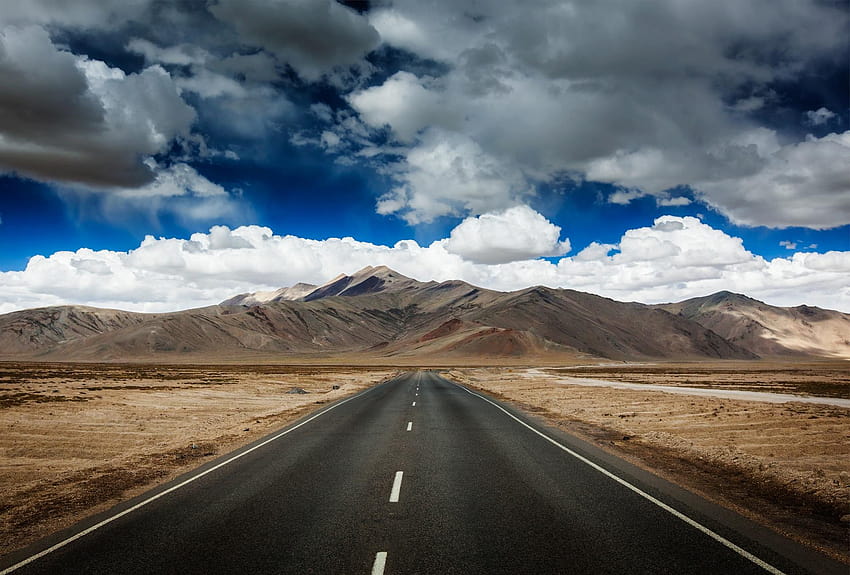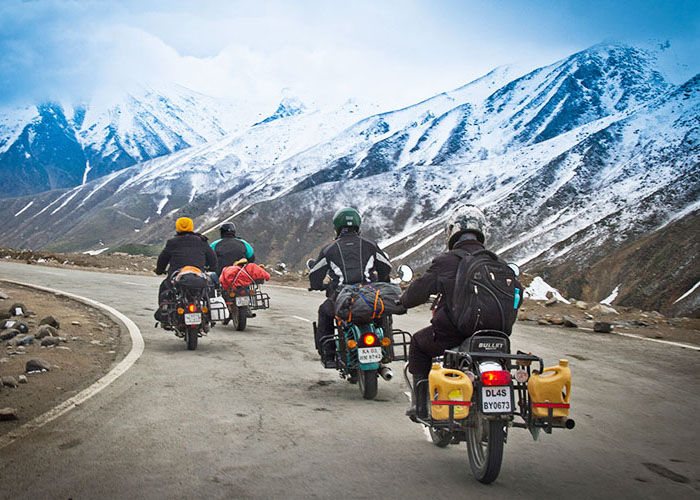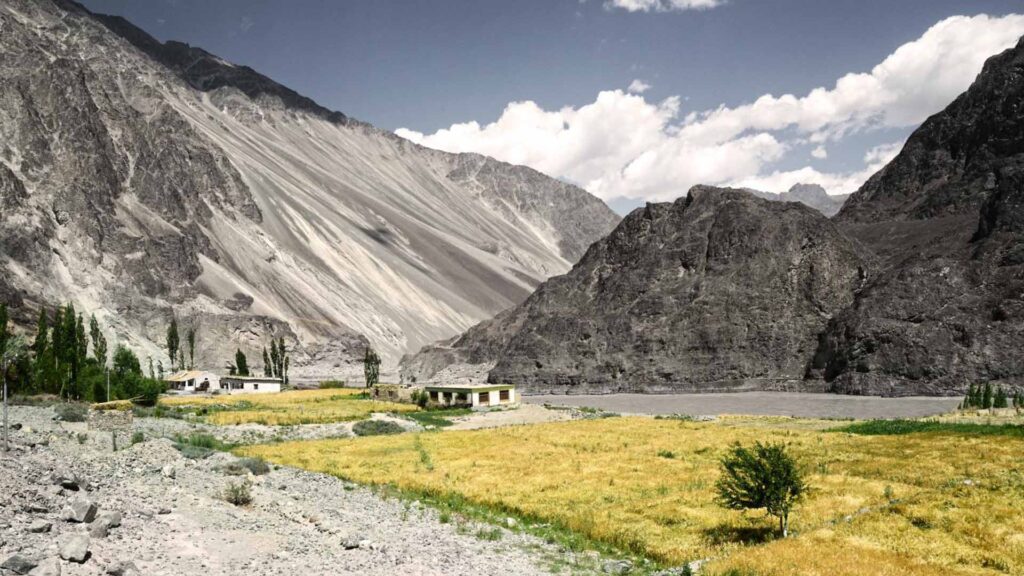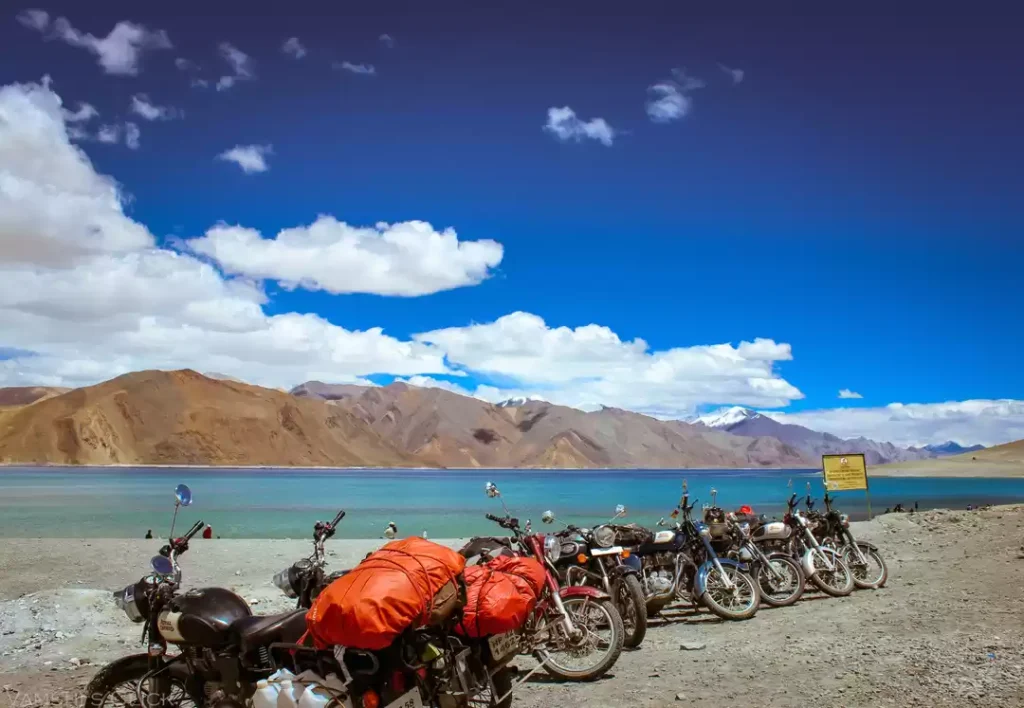
Leh - Ladakh

Ladakh is a paradise on Earth and boasts of unparalleled beauty. It is a ‘Land of high passes’ and dotted with high altitude lakes and lofty mountains. It is wedged between the high Himalayas and renowned as the ‘Shangri La of India’. Trip for Ladakh is one of the most sought after road trips. Drive through the high mountain passes and wandering in the winding lanes is once in a lifetime experience.
Are you planning a trip to Leh Ladakh or looking forward to exploring high passes, Buddhist monasteries, scenic hamlets and local culture of Ladakh? Do you wish to be a part of the delightful festival of Tibetan Buddhists? Does living on the edge of thrill and excitement fascinate you? If yes, then you have arrived at the right place. Here is the complete Ladakh Travel Guide and detailed information about ‘India’s Own Moonland’!
Listen to the age-old story about the numerous conquests, invasions and journeys along the Silk Road. Pacify your adrenaline rush by partaking white water rafting or enjoy the sightseeing during the Ladakh travel. In addition to all these, the spectacular views en route will serve as a visual retreat. Thereby, making your Ladakh trip a memorable one.
Places to Visit in Leh - Ladakh

- Diskit Monastery – the oldest and largest Gompa in Nubra valley.
- Turtuk Village – the last village in Ladakh near LOC.
- Pangong Tso – the most popular lake in Ladakh region which keeps changing colour from shades of blue to green.
- Shey Palace – Earlier a summer retreat by the kings of Ladakh.
- Shanti Stupa – peace seat of Japanese Buddhists, inaugurated by Dalai Lama.
- Indus Zanskar sangam – Confluence of Indus and Zanskar river.
What is the best time to visit Leh Ladakh?

- Diskit Monastery – the oldest and largest Gompa in Nubra valley.
- Turtuk Village – the last village in Ladakh near LOC.
- Pangong Tso – the most popular lake in Ladakh region which keeps changing colour from shades of blue to green.
- Shey Palace – Earlier a summer retreat by the kings of Ladakh.
- Shanti Stupa – peace seat of Japanese Buddhists, inaugurated by Dalai Lama.
- Indus Zanskar sangam – Confluence of Indus and Zanskar river.
The best time to visit Leh Ladakh is from May end to the middle of July as the roads to Ladakh are open both from Srinagar Leh highway and Leh-Manali highway during this time. Also, there is a good amount of snow, especially on the Leh Manali highway. Another good time to visit Leh Ladakh is from the middle of September to October, when Ladakh is at its most beautiful. It is also possible to get good discounts during this time due to the lesser number of tourists.
It is advisable to avoid visiting Leh Ladakh during the monsoon from July end to August as the region is prone to landslides. Also, the Srinagar Leh highway and Leh Manali highway are full of sludge, making travel very risky.
Tour Itinerary

Day 1
Arrive at Leh – a largest city and the capital of Kingdom of Ladakh. This region is known for its high passes, dramatic mountains and beautiful landscapes hence, called as paradise on earth. On arrival free time to get acclimatized to this high-altitude destination also referred as cold desert of India.

Day 2
Shanti Stupa
Explore the city of Leh. Visit Shanti Stupa – peace seat of Japanese Buddhists, inaugurated by Dalai Lama, Magnetic hill, Pathar Sahib Gurudwara, Indus Zanskar sangam, and Hall of Fame War Museum (Subject to Operation). Enjoy Folk dance in the evening (Subject to Operation).

Day 3
Morning we drive to Nubra Valley also called as Dumra, lies in the north of Leh. It is accessible over the Khardung la pass, one of the highest motor-able roads in the world at the height of 5359 m. From Khardung-la we drive to Diskit Monastery – the oldest and largest Gompa in Nubra valley famous for its beautiful architecture and intricate frescos and wall paintings. Also visit Future Buddha – – A 108 feet statue of Lord Buddha. Pass by the Shyok River and arrive at Nubra Valley, know for its pristine natural beauty, stunning lakes, apricot orchards and lovely surroundings. This spectacular valley is also known for the Bactrian camels and Quad biking, if time permits you can enjoy these activities on your own at an additional cost.

Day 4
Today we do excursion to Turtuk Village. The landscape, culture, language, clothing, and even the physical features of people change quite drastically crossing over into Turtuk, technically entering Baltistan region. It is the Indian-administered part of Baltistan region. In 1971 war Indian army captured this village and it is the last village in Ladakh near LOC. It is also one of the gateways to the Siachen Glacier. In the evening return back to Nubra Valley.

Day 5
Travel to Pangong Tso – the most popular lake in Ladakh region, as it is situated on high altitude and it keeps changing colour from shades of blue to green. The brackish water of this lake has very low micro-vegetation and has no aquatic life. The lake acts as an important breeding ground for a variety of birds including a number of migratory birds. The lake water stretches for more than 100 kms from China, Tibet to India. Overnight at Pangong.

Day 6
Morning we proceed to Leh. On arrival visit Shey Palace – which was used as a summer retreat by the kings of Ladakh, the Indus river, Hemis Gompa and Rancho School (Subject to Operation).

Day 7
Board the flight for your hometown. Tour Concludes.